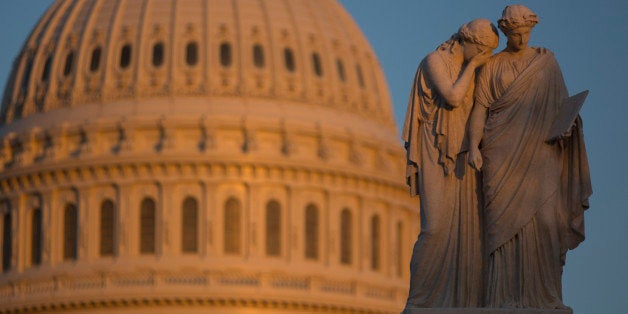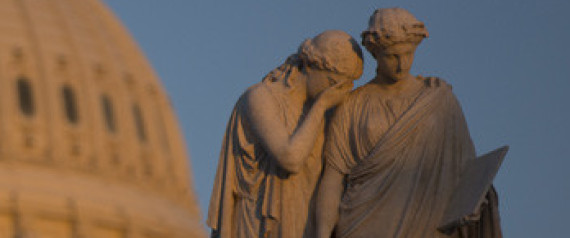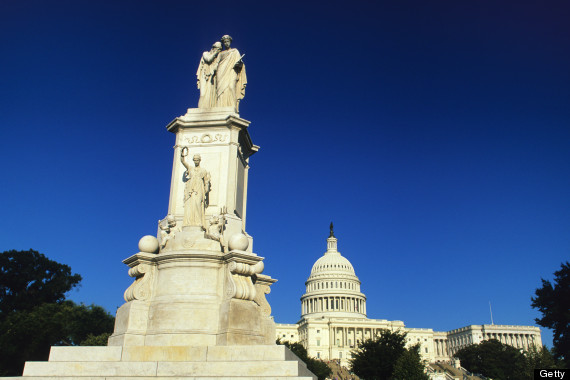
A few important characters stand out more than others in the past week's onslaught of government shutdown coverage. President Obama, of course, followed by a wincing Harry Reid, John Boehner, and whichever intern runs Ted Cruz's twitter account.
But another star has risen from the ashes of furlough reports and accounts of congressional crises, showing up in more than a couple of articles posted to media sites across the internet (see here, here, here, here and here.) The unlikely face of the shutdown seems to belong to the weeping woman positioned atop Washington, D.C.'s Peace Monument, also known as Grief.

The statue, featuring Grief crying on the shoulder of a female personification of History, sits conveniently close to the U.S. Capitol Building. So close, in fact, that photographers have been able to capture rather poetic snapshots of the despairing couple silhouetted by the blurred dome of congressional headquarters. The ominous image has been used in many a government shutdown story since October 1, despite the fact that the memorial has little to do with federal budget snafus.
In honor of Grief's newfound fame, we've compiled a quick guide on shutdown celebrity number one. Behold, six things you should know about the Peace Monument:
1. The Peace Monument has almost nothing to do with the federal budget: The monument was erected in 1877-1878 to honor naval deaths during the American Civil War. It is also called the Naval Monument or Civil War Sailors Monument.

2. The two women atop the monument are, however, aptly named Grief and History: The two classically robed figures atop the monument are female representations of Grief and History. Grief is shown crying on the shoulder of History, who is holding a stylus that reads "They died that their country might live."

3. On a more positive note, Victory and Peace are also located on the monument: The female figure of Victory stands below Grief and History, holding a laurel wreath and an oak branch to signify strength. She is flanked by infant representations of the Roman gods, Mars and Neptune. The female figure of Peace stands facing the U.S. Capitol, holding an olive sprig.

4. The monument was sculpted by an artist named Franklin Simmons: Born in Maine in 1839, Simmons has created four statues and three busts for the United States Capitol.

5. But the neoclassical monument was designed by an admiral named David D. Porter: Porter sketched the figures of Grief and History himself, and he began raising money from private funders to erect the monument as early as 1865. It was originally conceived for Annapolis, Maryland.

6. The inscription on the monument further proves the statue has little to do with the federal budget: "In memory of the officers, seamen and marines of the United States Navy who fell in defense of the Union and liberty of their country, 1861-1865."

In summary, Grief and History would like you to know that they're not actually crying about the government shutdown. It's an American Civil War monument, people.
